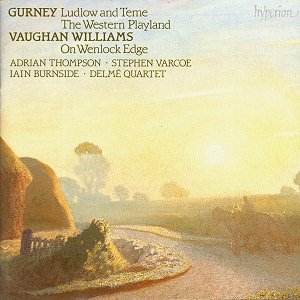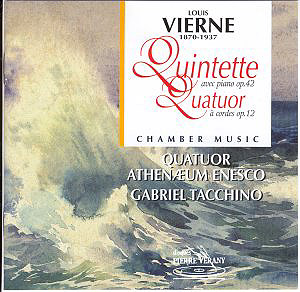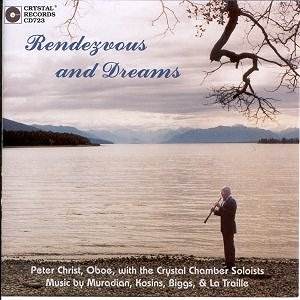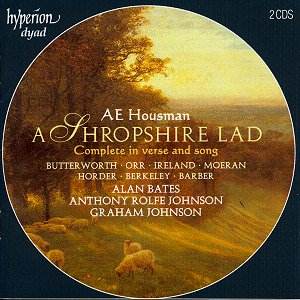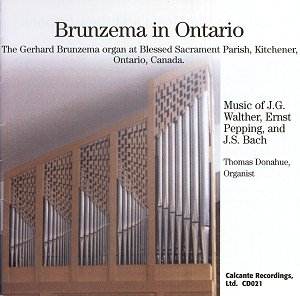 Composer: Gerhard Brunzema
Composer: Gerhard Brunzema
Works: Organ Works by Johann Gottfried Walther, Ernst Pepping, and Johann Sebastian Bach
Performers: Thomas Donahue, Organ
Recording: Blessed Sacrament Parish, Kitchener, Ontario, Canada, March 1996
Label: Calcante Recordings CAL CD021
The organ works presented on this recording reveal a remarkable intersection of historical significance and the interpretative challenges posed by various German composers of the Baroque and neo-Baroque periods. Gerhard Brunzema’s organ, installed in the Blessed Sacrament Parish, serves as both a vehicle for these compositions and a testament to the legacy of early organ building. The repertoire, which includes chorale preludes by Johann Gottfried Walther, selections from Ernst Pepping’s Kleines Orgelbuch, and transcriptions of Johann Sebastian Bach’s works, highlights the stylistic evolution from the intricate counterpoint of the Baroque to the more homophonic textures found in 20th-century compositions.
Thomas Donahue’s interpretation of Walther’s chorale preludes showcases the composer’s personal style, characterized by rich harmonies and complex counterpoint. While Donahue’s registrations are thoughtfully chosen and meticulous in detail, as indicated in the accompanying booklet, his execution often lacks the necessary dynamism to fully engage with the intricate textures of Walther’s music. The chorale preludes, particularly “Wachtet auf, ruft uns die Stimme” and “Liebster Jesu, wir sind hier,” require a nuanced touch to bring out the imitative patterns and the contrasting colors of the organ. Instead, the performances occasionally feel overly academic, resulting in a missed opportunity to evoke the emotional depth inherent in these works.
The selections from Pepping’s Kleines Orgelbuch provide a striking contrast to Walther’s pieces, with their strong cantus firmus and modern sensibilities. However, Donahue’s approach tends toward a square and unyielding execution, losing the energetic character that should animate works like “Nun freut euch, lieben Christen, g’mein.” The technical challenges of these pieces are met with a lack of expressive phrasing, which diminishes their liveliness and can leave the listener yearning for a more vibrant interpretation.
Bach’s transcriptions, particularly those of Cantatas 95 and 80, present further interpretative dilemmas. Donahue’s choices in registration often confuse the polyphonic dialogue, rendering the organ’s vast tonal palette underutilized. For instance, the transcription of “Ich will hier bei dir stehen” suffers from a lack of clarity between accompaniment and solo lines, leading to a muddled auditory experience. Notably, the successful execution of “Ein’ feste Burg ist unser Gott” stands out; yet, even here, the performance could benefit from a greater sensitivity to Bach’s intricate rhythmic structures and the nuanced articulation that would highlight the work’s inherent drama.
The recording quality itself, while adequate and capturing the organ’s resonant acoustics, sometimes falls short in delivering the full spectrum of the instrument’s tonal capabilities. The mechanical key action of Brunzema’s organ, designed to facilitate clarity and articulation, is not fully exploited in Donahue’s playing. The rich sound of the Gedackt 8’ and the warm tones of the Praestant 8’ emerge beautifully, yet the overall recording lacks the dimensionality and vibrancy that a more adventurous interpretation could provide.
This collection, while valuable for its insight into the organ repertoire of German composers, ultimately reveals the limitations of its execution. Donahue’s performances tend to adhere to a conventional academic style, failing to fully embrace the expressiveness and color that these works demand. The organ itself, with its historical and technical significance, deserves to be showcased in performances that reflect both its capabilities and the emotional depth of the music. The potential for a more engaging interpretation remains, inviting future exploration of this repertoire with a renewed focus on the artistic interplay between organ and composition.
